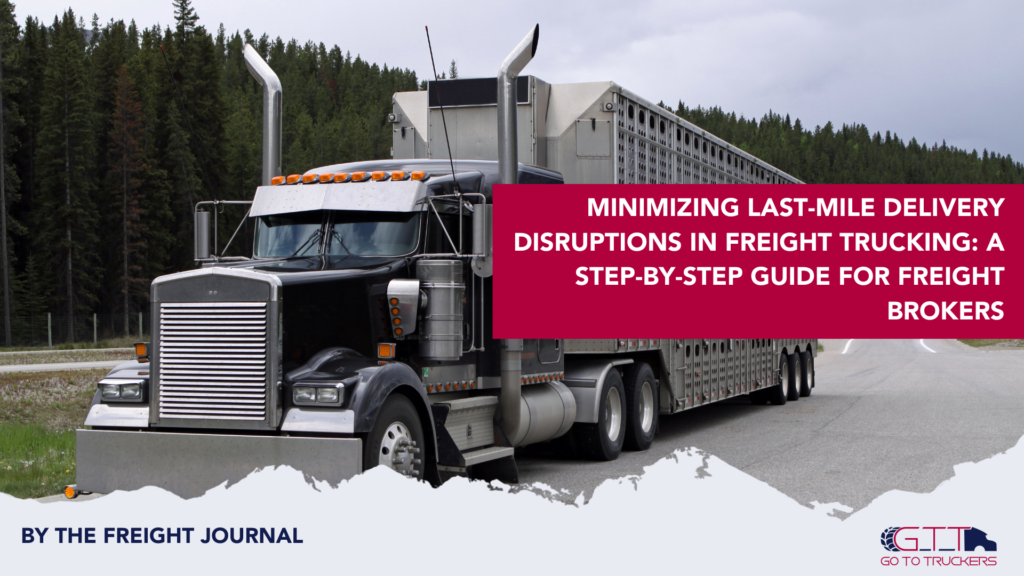
Last-mile delivery, the final stage of the freight transportation process, is often the most challenging and prone to disruptions. As a freight broker, ensuring smooth last-mile operations is a huge goal not only for timely deliveries but also for enhancing customer satisfaction and building a strong reputation. In this article we will provide a step-by-step guide and actionable tips to minimize last-mile delivery disruptions.
Step 1: Thorough Carrier Selection and Vetting
The foundation of successful last-mile delivery lies in selecting reliable and capable carriers.
- Vetting Process: Go beyond basic checks. Scrutinize carriers’ performance history, on-time delivery rates, customer reviews, and experience in handling similar shipments.
- Technology and Communication: Ensure carriers have the necessary technology for communication and issue resolution.
- Local Expertise: For deliveries in specific regions, prioritize carriers with strong local knowledge and established networks.
Step 2: Proactive Communication and Collaboration
Open and proactive communication with all stakeholders is key to preventing and mitigating last-mile disruptions.
- Shipper Communication: Clearly communicate expectations, delivery timelines, and any potential challenges to the shipper.
- Carrier Communication: Maintain regular contact with carriers to monitor shipment progress, address concerns, and provide updates.
- Customer Communication: Keep the customer informed about the shipment status, estimated delivery time, and any delays.

Step 3: Contingency Planning and Risk Mitigation
Despite best efforts, unforeseen disruptions can still occur. Having contingency plans in place helps minimize their impact.
- Alternative Routes and Carriers: Identify alternative routes and backup carriers to reroute shipments in case of disruptions.
- Weather Monitoring: Stay informed about weather conditions and plan accordingly to avoid delays due to inclement weather.
- Insurance Coverage: Ensure adequate insurance coverage to protect against financial losses in case of unforeseen events.
Step 4: Customer-Centric Approach
Prioritizing customer satisfaction throughout the last-mile delivery process fosters loyalty and positive word-of-mouth.
- Flexible Delivery Options: Offer flexible delivery options, such as evening or weekend deliveries, to accommodate customer preferences.
- Proactive Issue Resolution: Address customer concerns and complaints promptly and professionally.
- Feedback Collection and Analysis: Regularly collect and analyze customer feedback to identify areas for improvement and enhance the overall experience.
By following these steps and implementing these actionable tips, freight brokers can minimize last-mile delivery disruptions, enhance customer satisfaction, and build a reputation for reliability and excellence. Remember, successful last-mile delivery is a collaborative effort that requires proactive planning, effective communication, and a customer-centric approach.

No Comments yet!